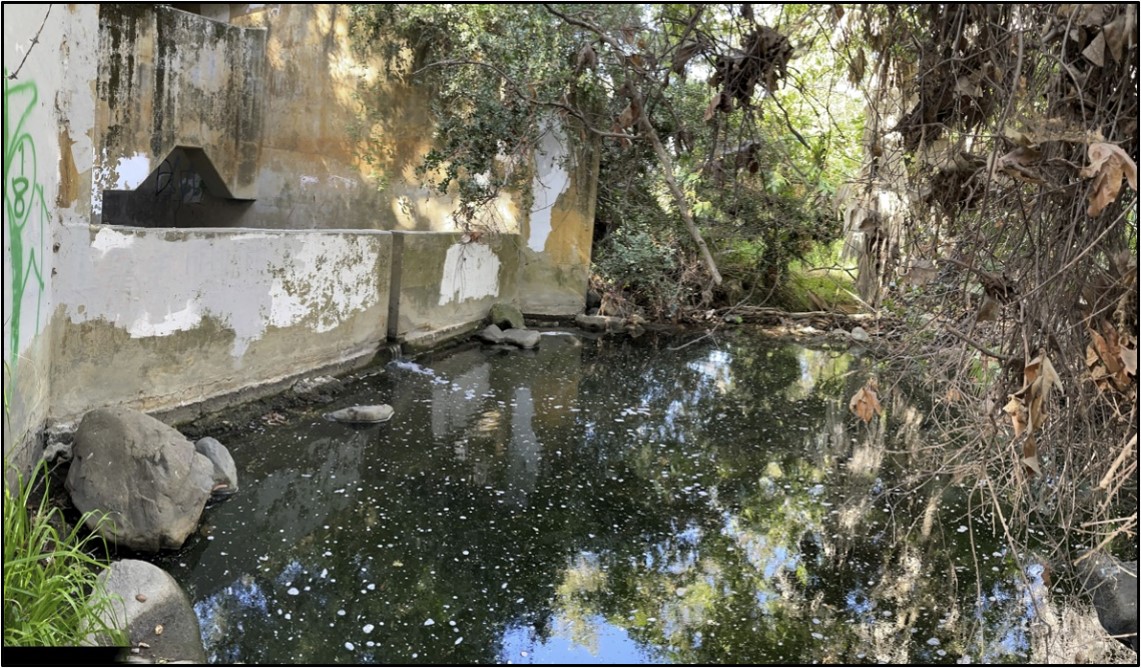Study demonstrates how to use framework to restore more natural flows to streams

SCCWRP and its partners have completed a three-year study demonstrating how watershed managers can build a rigorous scientific foundation for integrating environmental flow considerations into their stream restoration planning efforts.
The study, completed in January, used a standardized, multi-tiered framework known as the California Environmental Flows Framework to systematically study 23,000 linear feet of degraded stream habitat in southern Orange County, with a focus on evaluating how altered, unnatural flow patterns are contributing to poor stream biology.
Stream managers will be able to use the study’s insights to decide what specific, targeted actions they should take where to reverse the area’s unnatural flow patterns and work toward achieving the greatest improvements to ecological health. These actions are expected to include installation of flow-capture devices across multiple adjacent watersheds to reduce unnatural dry-weather flows.
The South Orange County Flow Ecology Study represents a significant advance in how watershed managers in California approach protecting the environmental flow needs of streams. Traditionally, managers maintain a narrow focus when assessing environmental flow needs, often examining a single species during a single season at a single location – an approach that can lead to potentially ineffective stream restoration actions.
By contrast, the California Environmental Flows Framework requires stream managers to holistically evaluate key aspects of flow patterns that functionally sustain multiple native species across multiple seasons; the framework can be used to study multiple stream reaches simultaneously that are undergoing a range of site-specific environmental stresses.
Thus, the southern Orange County study served as a key opportunity to test-drive the statewide framework during its development; the California Environmental Flows Framework, which was co-developed by SCCWRP, was unveiled in draft form in 2021 and is undergoing final review.
The completion of the South Orange County Flow Ecology Study comes on the heels of another California Environmental Flows Framework demonstration project that focused on the Los Angeles River. During that study, completed in spring 2021, researchers examined the consequences of diverting more wastewater effluent and runoff discharges from the river for water recycling purposes – a scenario that is expected to become more commonplace with climate change.
Compared to the L.A. River study, the southern Orange County study was more extensive, involving a much wider study area and more diffuse discharge sources.
A priority during the southern Orange County study was improving understanding of how altered flow patterns trigger adverse effects to stream biological communities. Under the federal stormwater discharge permit for southern Orange County, watershed managers have determined that altered flows are one of the highest-priority impairments that should be addressed to improve stream biology and protect ecosystem health.
In response, SCCWRP and its partners used extensive bioassessment data collected from across Southern California to develop flow-ecology models that relate levels of flow alteration to biological health. Watershed managers will be able use the modeling tools and prioritization maps to determine what actions they should prioritize taking where to improve and protect biological health.
The study is described in two articles published in the journal Frontiers in Environmental Science – one on the approach that researchers took to linking altered flow patterns to the biological integrity of streams, and a second on determining southern Orange County’s environmental flow needs.
For more information, contact Dr. Kris Taniguchi-Quan.
More news related to: Ecohydrology, Top News